It is one of three finds recovered in the Colli Albani area, a mountainous relief of volcanic origin located southeast of the capital; found fortuitously en plein air on woodland and referable to the Upper Paleolithic (10,000-40,000 BC), the three artefacts which can be considered elements of movable art are: the female figure of Monte Compatri, the striker/retoucher of Monte Alto which has recently been recognized as lunar calendar function and the striker/retoucher of Monte dell'Artemisio.
La female figurine of Monte Compatri it is sketched on a basalt pebble of Albanian origin; the anatomical characterization is very simplified performed only on the frontal portion of the pebble. The anthropic interventions are very limited and, as observed for other figures of this type, interventions would have been made on a natural support chosen because it was already suggestive in itself. Most of the pebble has a natural conformation characterized by rough surfaces and fissures, due both to alteration phenomena and to subsequent cooling. Two surfaces projecting like sinuses are distinguished; an oblique furrow marking the beginning of the right thigh; in the center a circular gap a few millimeters deep, which can be interpreted as a navel; a possible delimitation of the left lower limb could be discernible in some irregularities on the lower portion of the support. Specifically, the natural crack on the pebble cap was regularized and modeled by abrasion with the intention of outlining the two sinuses; an abrasion surface is also visible in the right portion of the figure. At the attachment of the right breast, the natural fissure was resumed with a scratching/incision operation, useful for the continuation and deepening of the furrow. A very similar operation concerned the delimitation of the right lower limb of the figure, where a natural fracture line was marked by an incision. Further modifications may have concerned the base of the pebble, also with an abraded surface, and a small line engraved on the back of the stone. Lastly, the gap representing the navel is due to the natural detachment of a mineral and was subsequently used to shape the figure.
Il striker/retoucher of Monte Alto it was discovered fortuitously by the archaeologist Flavio Altamura of the Department of Ancient Sciences of Sapienza, near the top of Monte Alto (Nemi) on the western foothills of the Artemisio chain. This erratic object, found along a path, was in a secondary position, therefore isolated from an inhabited site. From the studies carried out subsequently it was possible to ascertain that it is a natural support of origin extraneous to the Alban area (marl or marly limestone), with an elongated shape and a rounded quadrangular section. It should be noted that the closest marl outcrops are found on the Tiburtini and Lepini mountains, a few tens of kilometers from the place of discovery. The artifact has clear traces of use as a retoucher and soft stone striker. The most recent analyzes carried out with the use of an optical microscope on the pebble have highlighted different traces of intervention (traces of use, decorative notches and ocher residues). It seems clear that at the date of the study of the find (2013) the characteristics of a "lunar calendar" of the pebble found in 2007 were not yet hypothesized, a hypothesis that was formulated in 2019, on the basis of the similarity of the number of notches to the lunar cycle. The research was published in the Journal of Archaeological Science: Reports. The tapered morphology is more reminiscent of a twin specimen from the Gravettian levels of the Laussel Cave in France.
Il striker/retoucher of Monte dell'Artemisio it was found fortuitously on the steep northern slope of the Maschio dell'Artemisio (Velletri), one of the highest hills of the homonymous mountain range. It was in a secondary position at the bottom of a meteoric incision along a dirt path. It is an elliptical flint pebble with small dimensions. The support is almost totally corticated; the flint is gray in color and of exotic origin with respect to the Alban geological substrate which, being volcanic, does not include flint. From the analysis of the morphometric characters it appears that it was probably found in a context of alluvial origin. The measures contained refer to the exploitation of small siliceous pebbles typical of the coastal area of southern Lazio (so-called Pontinian and Circeian industries, as well as Epigravettian ones) and it is therefore probable that it comes from these areas. The instrument shows traces of use such as a hard striker and a retoucher. Two areas of staking are visible on the marginal portions of the artefact. On the ends of the artifact there are also deep abrasions that refer to a last use as a striker or pestle. Prolonged and vigorous use also resulted in the accidental detachment of two cortical splinters near the impact surfaces. However, the most interesting feature of the artefact is the ocher coloring that affects about half of the pebble. Despite a certain regularity and symmetry in the distribution of the dye, there seems to be no decorative scheme. The ocher was applied to the cortex at a time prior to the use of the pebble as a retoucher and striker: the traces of use and chipping in fact affect the colouring.
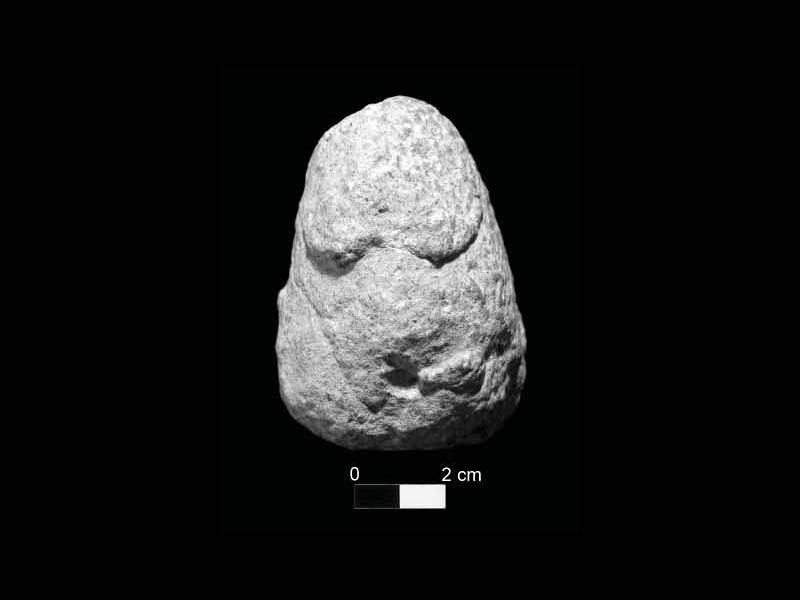
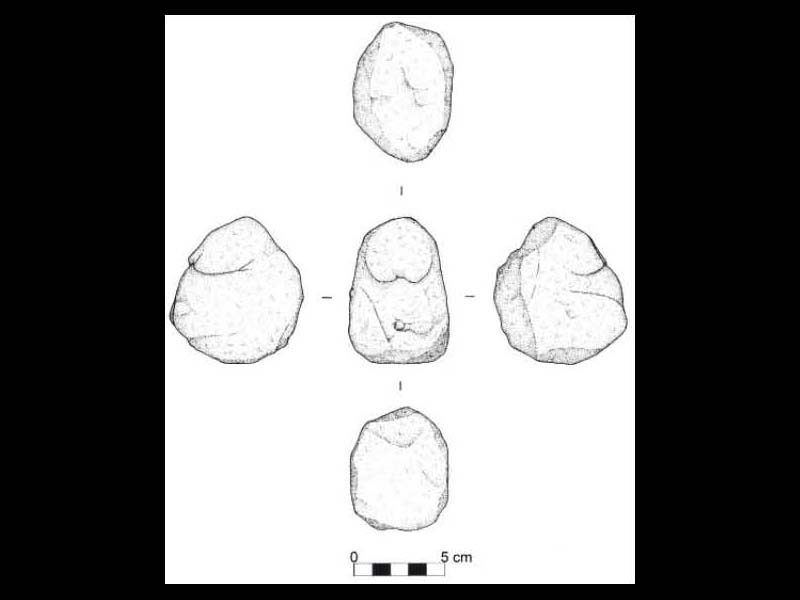
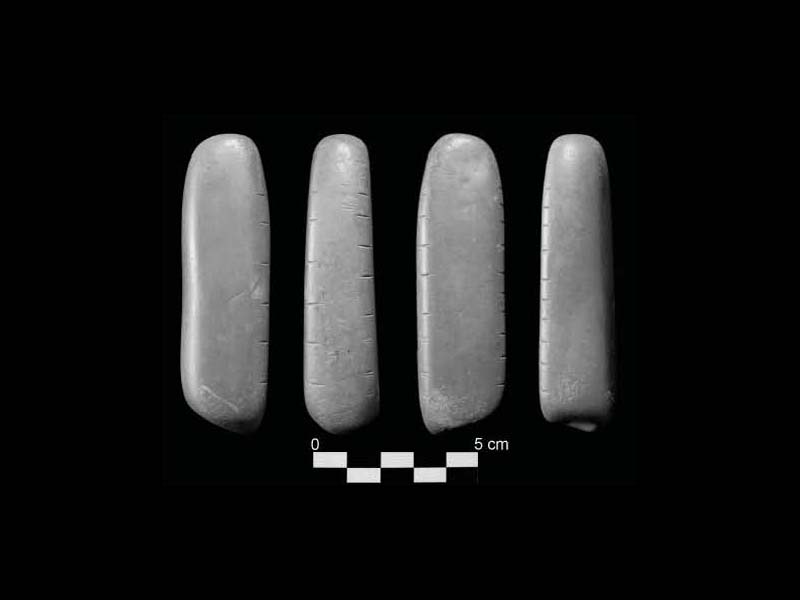
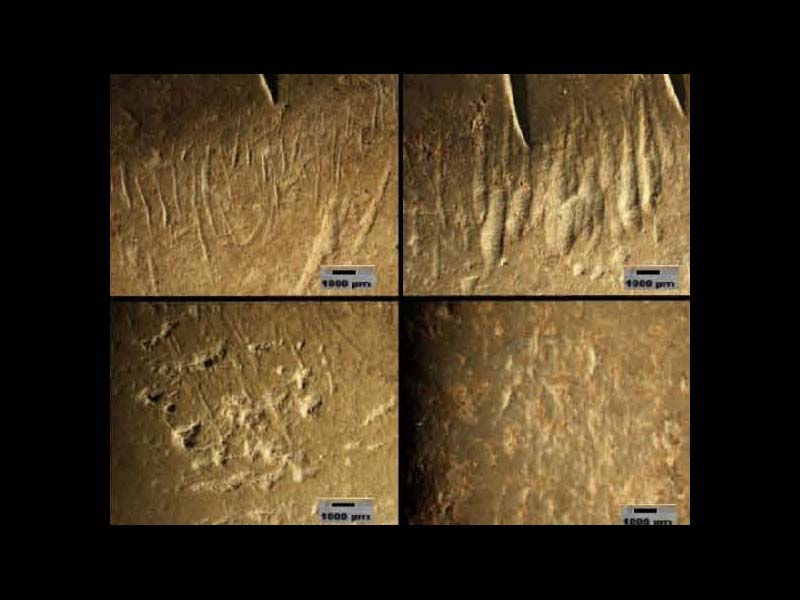
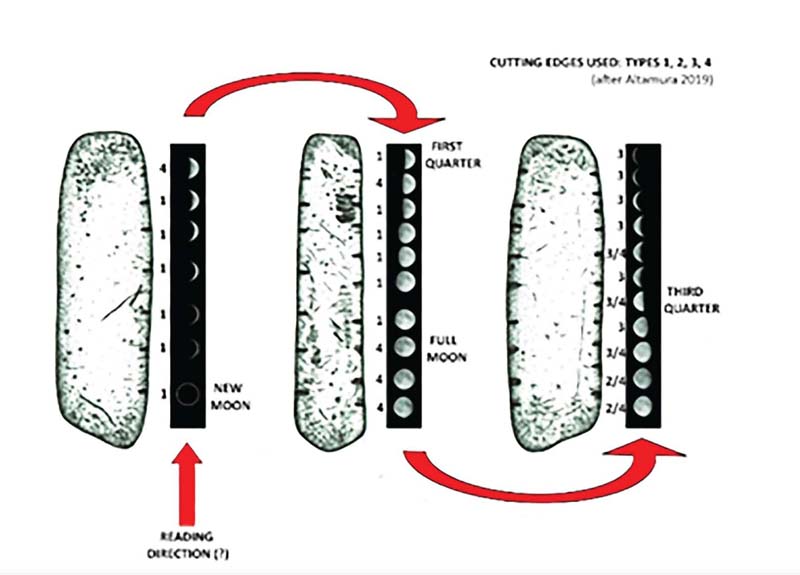
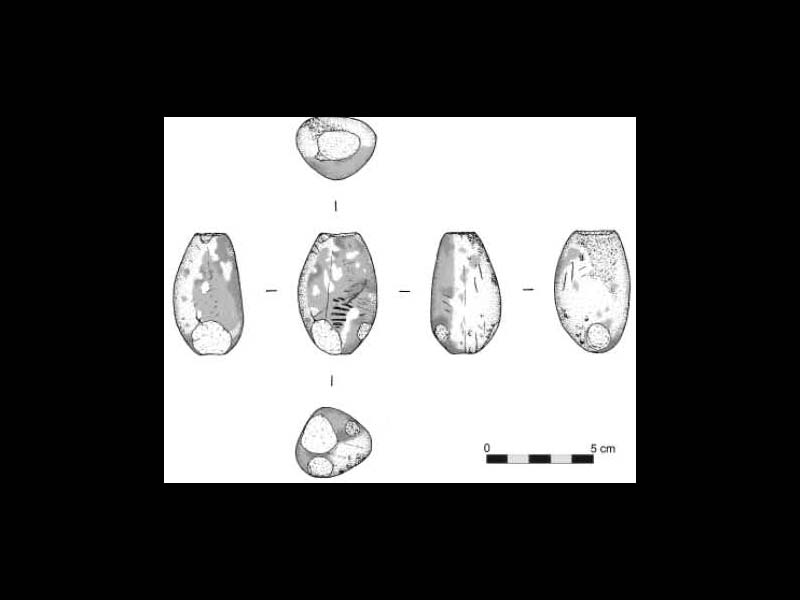
Historical notes
In recent decades, the Colli Albani have yielded a significant quantity of Palaeolithic finds and the discovery of these three finds in sub-mountain contexts (530, 672 and 678 meters above sea level, with probable sliding from even higher altitudes) allows us to hypothesise a frequentation of altitudes so high thanks to a late-glacial climate which may have favored the attendance of previously inaccessible or non-exploitable locations from a hunting perspective; places used perhaps as seasonal camps or temporary posts for sighting and checking game. The archaeological data manifests atypical characteristics: three complex artifacts come from the top or from the slopes of the same mountain range, in altimetric bands that do not present, to date, other contemporary evidence of attendance. This circumstance would suggest a symbolic behavior reiterated over time, such as the intentional abandonment of objects with particular significance in mountainous locations, a practice found in various pre-protohistoric and ethnographic contexts.
On the other hand, the fact that the Albano massif occupies a central role in the landscape of ancient Lazio and that its last phase of volcanic activity was still evident in the Upper Paleolithic could have aroused in its original inhabitants the sense of sacredness that will be well known in the subsequent periods.
All three finds described come from woodland soils in contact with the geological substrate formed by products of the final geological phase of the Tuscolano-Artemisio, phase in which the structure of the volcano was created, characterized by massive explosions and pyroclastic and lava flows, interspersed with long periods of calm and the formation of accumulations of the first volcanic products (granular gray tuffs). No valid reference stratigraphic horizons are currently known.
The female figure of Monte Compatri was found fortuitously by Mr. Emiliano Zucchini and reported to the Archaeological Superintendency on 23-02-2010. It was located at the GPS coordinates N41 48 11.30; EO 12 44 58.24; approx. 530 masl
CARD
LATEST PUBLISHED TEXTS
VISIT THE FACTSHEETS BY OBJECT

